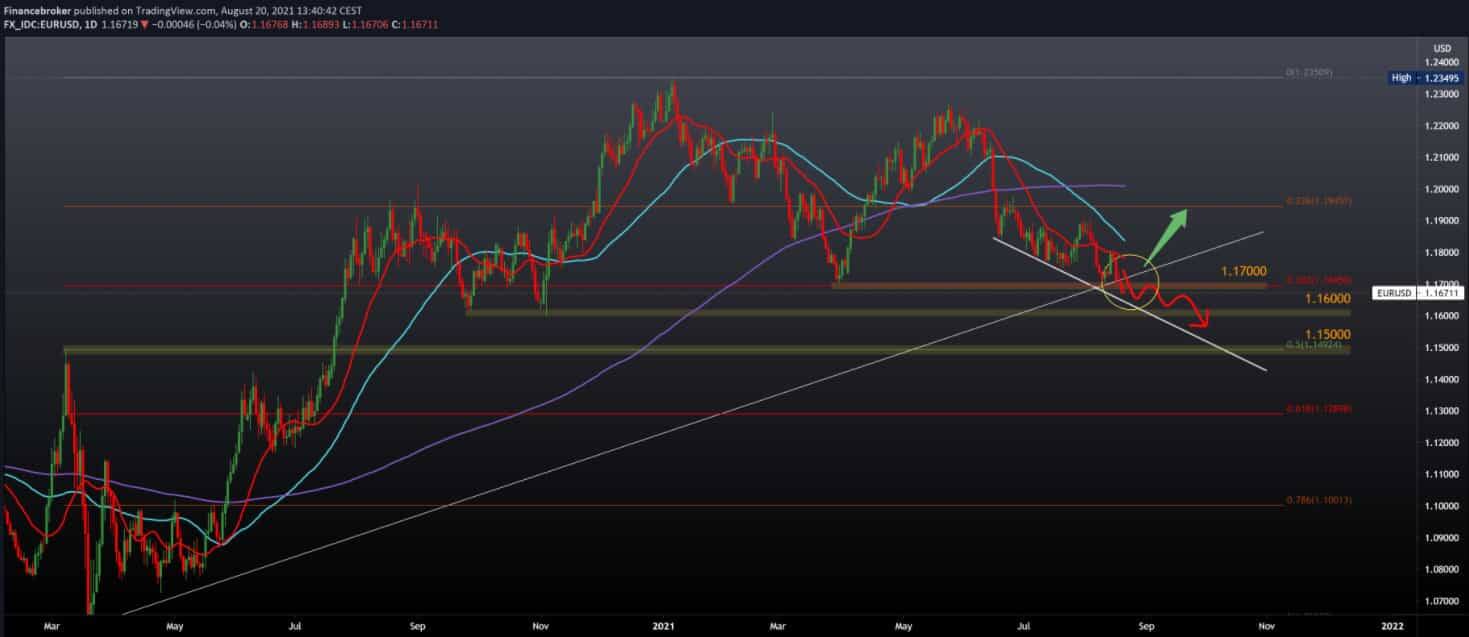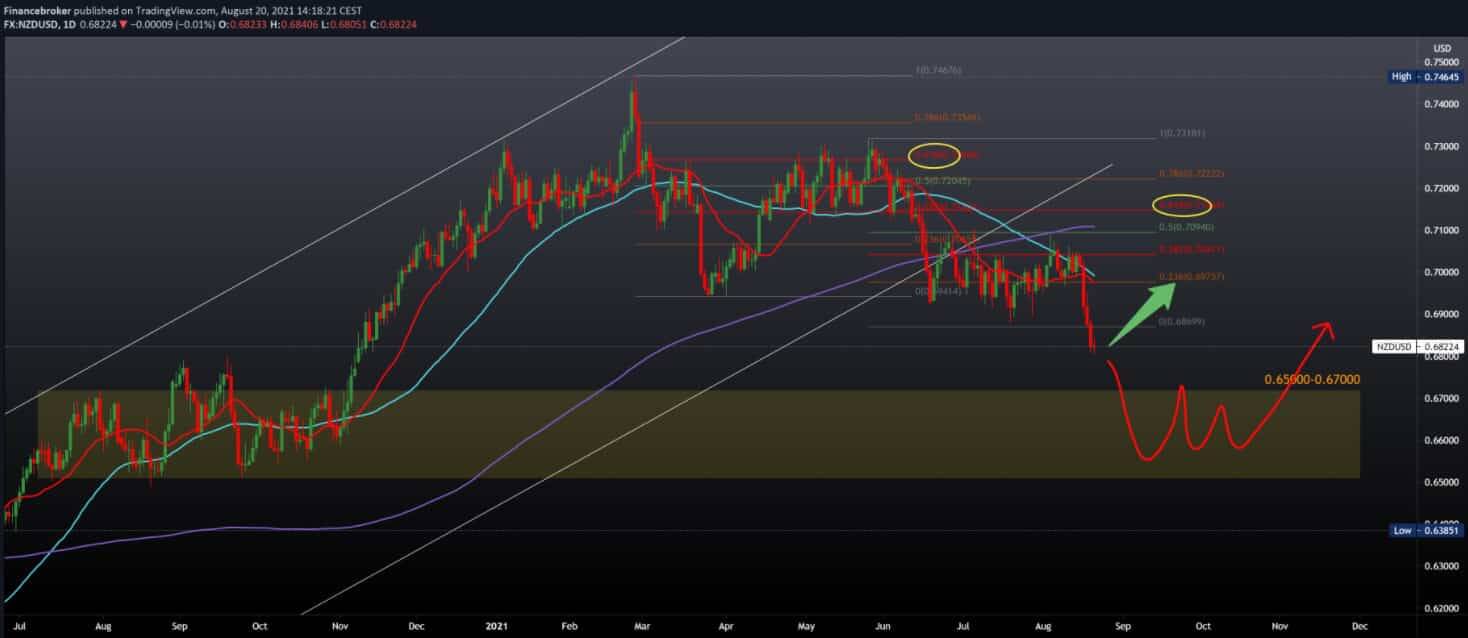
EURUSD and NZDUSD are still under the influence of dollars
EURUSD chart analysis
Looking at the chart on the daily time frame, we see that the pair managed to drop below 1.17000. The previous lows from April have been confirmed, and we are now likely to descend to lower levels on the chart. If the bearish trend of potential support continues, we are looking for 1.16000, and the next one for 1.15000, close to 50.0% Fibonacci levels at 1.14925. To turn to the bullish side, we first need a price increase above 38.2% Fibonacci level to 1.16950. Then we need further growth above the bottom support line and a break above the 20-day moving average of 1.18000. After that, the next resistance at 1.18500 awaits us, and the jump to the 200-day moving average shows us that we are returning to the bullish trend.

NZDUSD chart analysis
Looking at the NZDUSD chart on the daily time frame, we see that we have descended to a potential support zone around 0.68000. If the support does not last, then we can expect the pair to continue falling towards the lower levels on the chart. We can notice that a large consolidation zone 0.65000-0.67000 awaits us below, which means that a bad period is being prepared for the NZD. If the NZD strengthens, we can expect the pair to climb to the first moving average of MA20 in the 0.69500 zone by any chance.

Market overview
New Zealand Prime Minister Jacinda Ardern extended the lockdown across the country today after the number of people suffering from covid increased. The infection spread outside the country’s largest city, Auckland, to the capital, Wellington. New Zealanders lived without restrictive measures, while Ardernova was not forced on Tuesday to introduce a three-day lockdown in the country due to the new patients, with a seven-day closure of Auckland, Reuters reported.
She extended the lockdown until midnight on August 24, saying that the infections had spread to other cities. “We do not yet have a full picture of the new delta strain,” the prime minister said. Health workers said 11 new cases were reported on Friday, three of which were in Wellington. In New Zealand, 19 percent of the population of 5.1 million has been revaccinated so far.
In Sydney, Australia, the lockdown was extended until the end of September today, and stronger restrictive measures were introduced in order to stop the spread of the coronavirus delta strain, which includes curfew and mandatory wearing of masks outdoors.
The Australian state of New South Wales, whose capital is Sydney, announced today that it has registered 642 new cases of covid, which is the fourth day in a row that the numbers exceed 600 new cases, the AP reported. Since the end of June, Sydney has been locked after the first infection with a highly contagious delta strain was recorded. Since then, 65 people have died from covid. Lockdown in Sydney was supposed to end on August 28, but the government announced that it would extend it until September 30.
Germany’s producer prices have risen at the fastest pace since January 1975, data released by Destatis revealed on Friday. Producer prices rose 10.4 percent a year in July, after rising 8.5 percent in June. Economists predicted a 9.2 percent increase. This is the fastest growth since January 1975, when prices rose sharply in the midst of the first oil crisis. Excluding energy, producer prices rose 7.4 percent year-on-year in July, after rising 6.0 percent in the previous month.
-
Support
-
Platform
-
Spread
-
Trading Instrument




